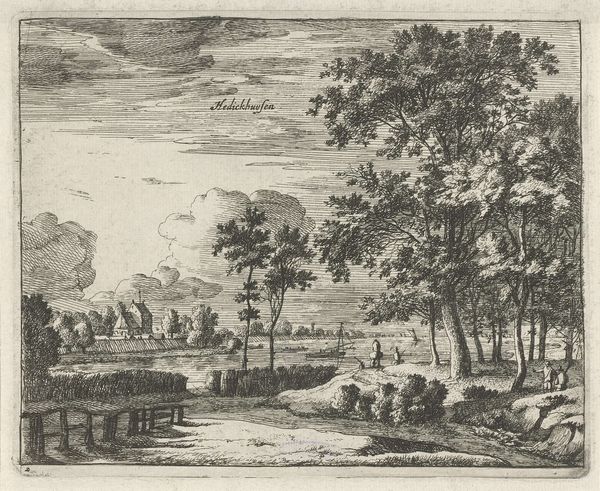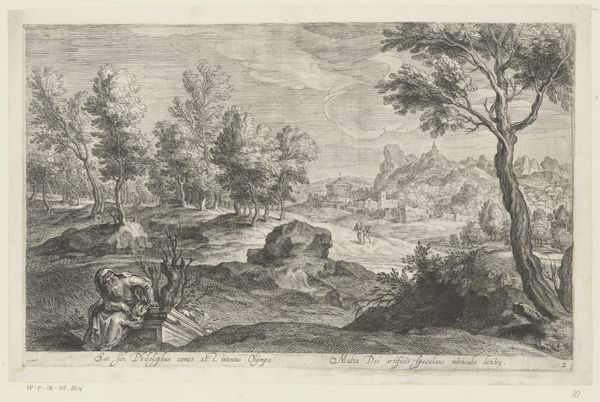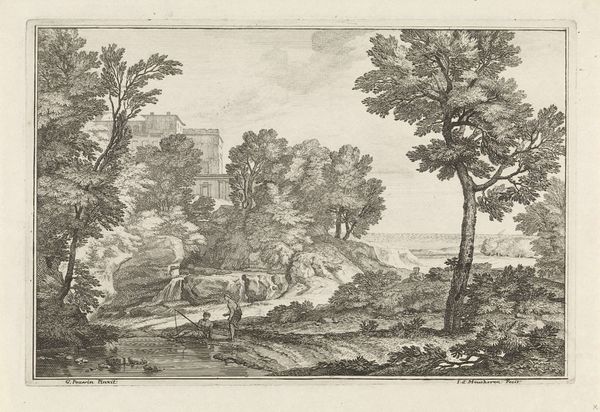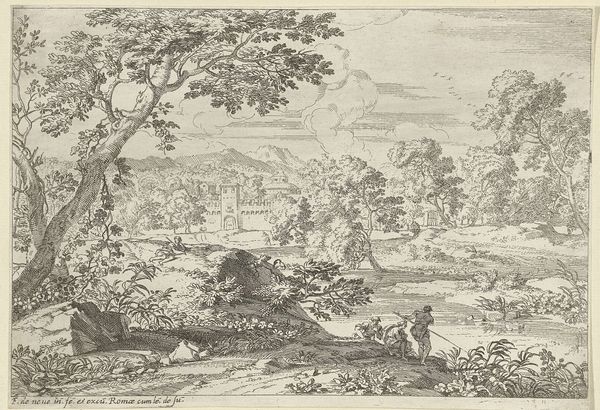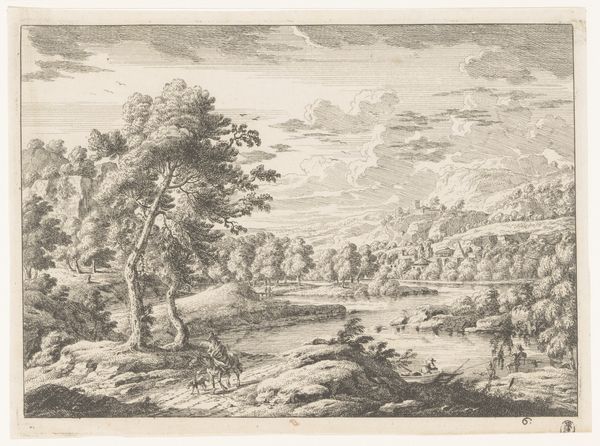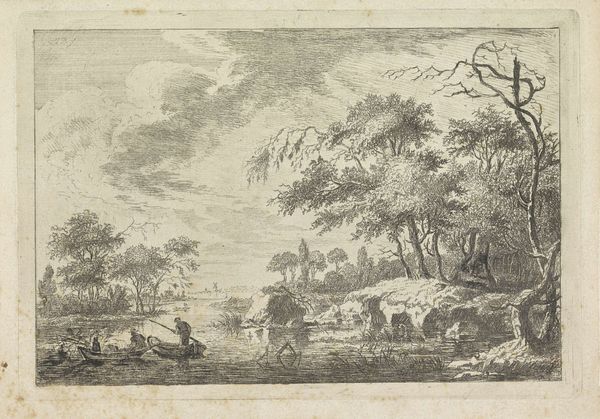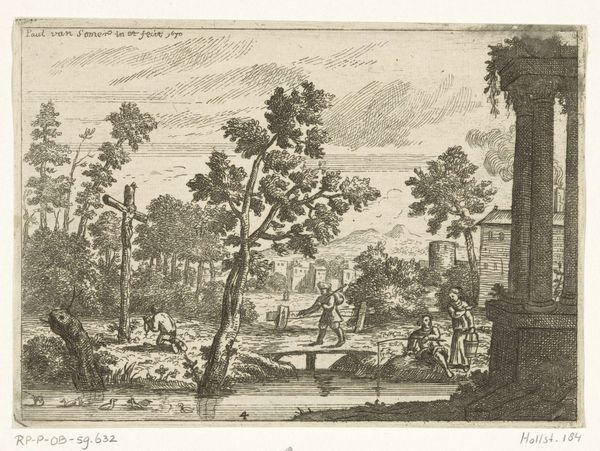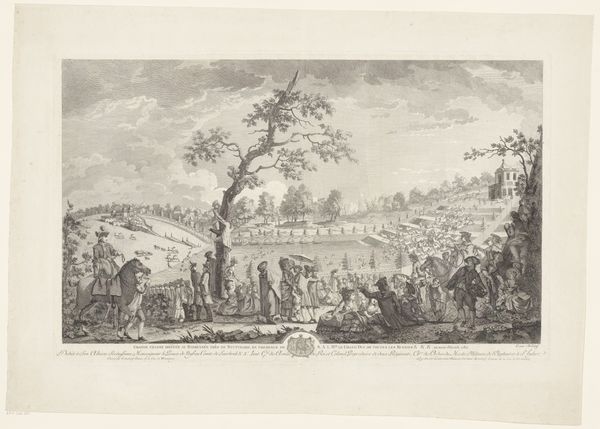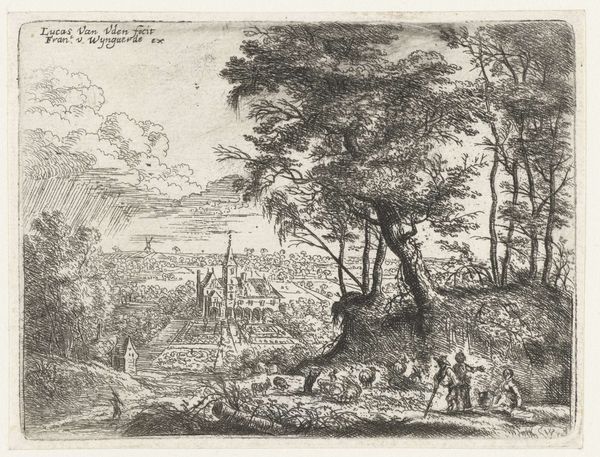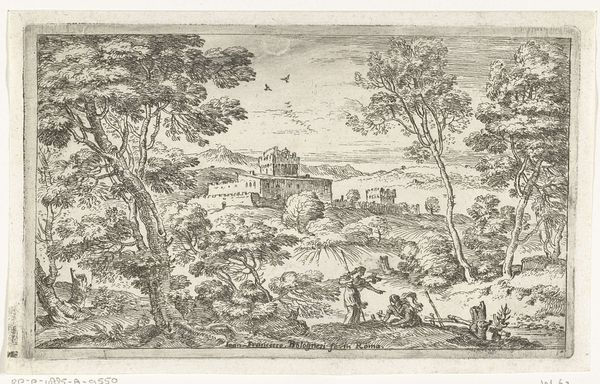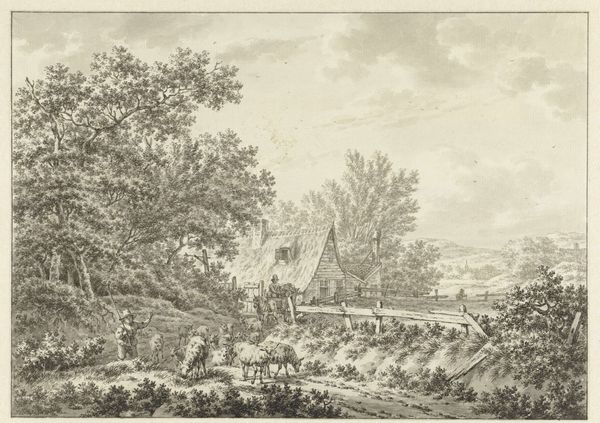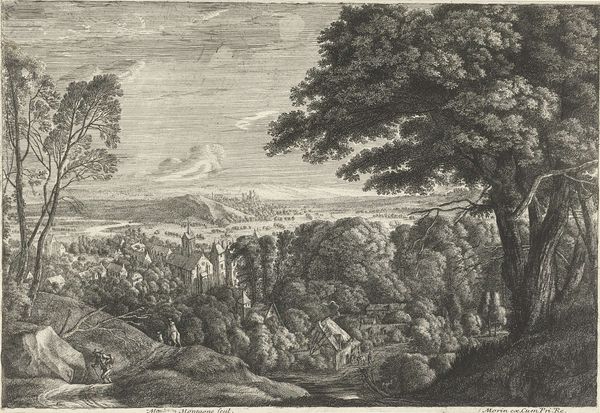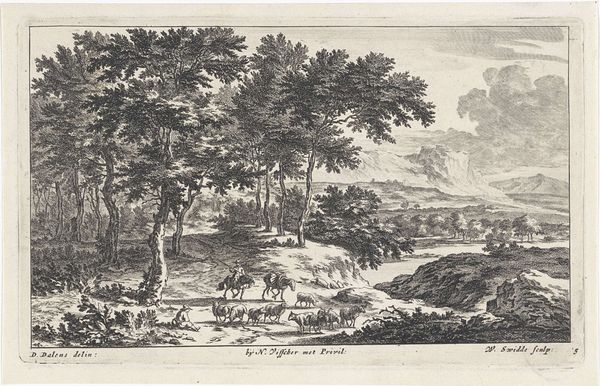
print, engraving
#
baroque
#
dutch-golden-age
# print
#
pen sketch
#
pencil sketch
#
landscape
#
form
#
line
#
engraving
Dimensions: height 168 mm, width 253 mm
Copyright: Rijks Museum: Open Domain
Editor: Here we have "Landschap met een kloof", or "Landscape with a chasm," a print from sometime between 1697 and 1744, by Isaac de Moucheron. The rendering is incredibly detailed. What stands out to me are the repeated triangular shapes and rocky motifs. How do you interpret this work? Curator: The landscape is less of a mirror and more of a stage for something playing out deep within the cultural psyche. What’s echoed? Look at the precipice. It appears, doesn’t it, as a gateway to something unknown, an echo of a primal fear and, paradoxically, an alluring curiosity that speaks to the Romantic ideals of the sublime. Do you notice how the trees, almost anthropomorphic, guard the edges of the composition? Editor: Yes, like silent sentinels. It’s almost as though they’re witnesses. Is that intentional, do you think? Curator: Precisely. And the tiny figures in the foreground – consider them not just as people, but as symbols of humanity dwarfed by nature's grandeur, reminding us of our fleeting existence within a timeless landscape. See how the symbols of power – the rocks and figures, the trees and cliffs, converge on one unified horizon line! Editor: It does make me think about my place in the world. And how artists can portray our culture's relationship with nature and time so elegantly. It is humbling. Curator: Visual art connects us with long arcs of time through motifs and the emotional connections. The ravine, for example, symbolizes transformation and division in mythologies across various cultures, offering endless interpretive paths. Editor: Fascinating! It’s amazing how a simple landscape print can reveal so much about cultural memory. I never would have noticed so much!
Comments
No comments
Be the first to comment and join the conversation on the ultimate creative platform.
